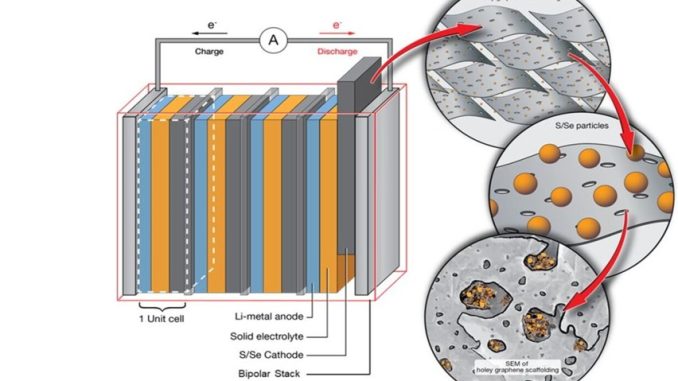
NASA has announced an important potential leap in aviation battery technology with the development of the Solid-state Architecture Batteries for Enhanced Rechargeability and Safety (SABERS).
“Developed jointly at NASA’s Glenn, Langley and Ames Research Centers, SABERS includes several advanced material, manufacturing and computational design innovations that enable a new paradigm in battery performance,” according to a NASA statement.
“The primary target application is next-generation electric aviation propulsion systems, yet SABERS will benefit other applications, too. Whether for large electric vehicle systems or small electronic devices, SABERS can potentially set new benchmarks in energy density and power, all while offering the utmost in safety and reliability. And importantly, the inventors intentionally designed environmentally friendly and sustainable materials and manufacturing methods into SABERS’ portfolio. SABERS can help address today and tomorrow’s needs for electrification and sustainability. NASA is seeking industry partners for commercialization. SABERS is available for license as a complete portfolio or as individual component technologies.
“The SABERS innovators developed novel lithium-sulfur designs, including sulfur-selenium on graphene cathodes, and lightweight bipolar plate stacking and packaging designs. SABERS is unique in several aspects: it deploys graphene-based manufacturing processes for the cathode and bipolar plates, and it uses a solid-state electrolyte in place of the liquid electrolyte found in other lithium-sulfur battery designs.
“The team has achieved energy densities over 500 W-hr/kg, and further improvements are expected. SABERS can meet the high-power requirements needed for aircraft take-off. SABERS is lightweight, safe, robust, and reliable. Furthermore, its manufacturing processes are scalable and environmentally friendly. Coin cell and pouch prototypes have been demonstrated to date. Development efforts continue and new portfolio innovations are expected.
| Benefits and applications
• Novel Battery Chemistry and Design: Lithium-Sulfur/Selenium with a solid-state electrolyte, enabled by graphene cathode and bipolar plate technology. • High Performance: Energy density more than double current generation Li-Ion batteries. High discharge rates to power aircraft takeoff. Lightweight and robust. • Safety: Solid-state design provides high damage tolerance and eliminates fire risks. • Sustainability: The battery itself can enable electrification to help meet carbon emission climate goals and is amenable to recycling. Battery materials and manufacturing processes are environmentally friendly. • Scalability: Based on readily scaled manufacturing processes. • Patented: Several issued patents and pending patents. Additional patents anticipated. • Suite of Technologies: This is not just one innovation, but an entire suite of innovations optimized in combination to meet performance goals. Based on the collective efforts of innovators at multiple NASA research centers. • Prototype Demonstration: Coin-cell and pouch type batteries have been successfully demonstrated, and research is still on-going to optimize the design and performance.
Applications • Aviation: Battery-powered propulsion systems for next generation electric aircraft • Automotive: Lightweight batteries that can offer improved safety, sustainability and driving range of electric cars and trucks. • Other: Military/defence, electronics, etc. |
For more information
https://technology.nasa.gov/patent/LEW-TOPS-167

